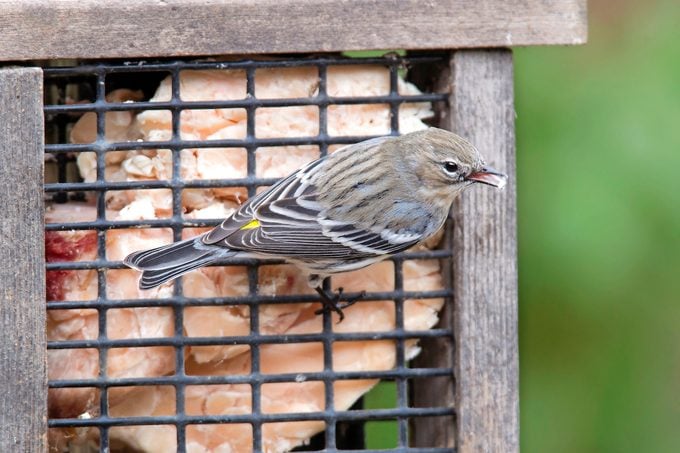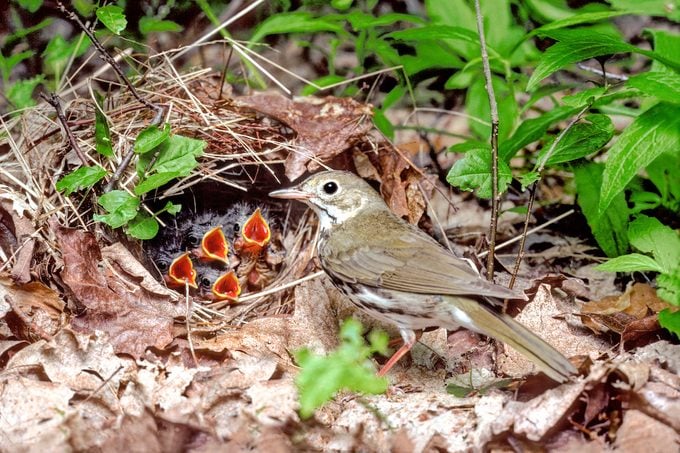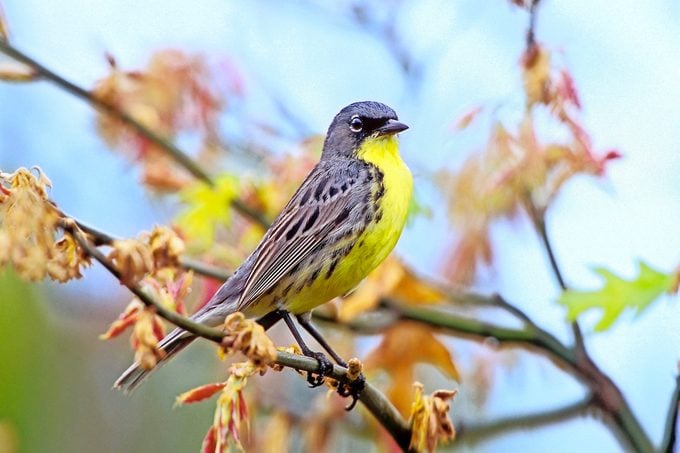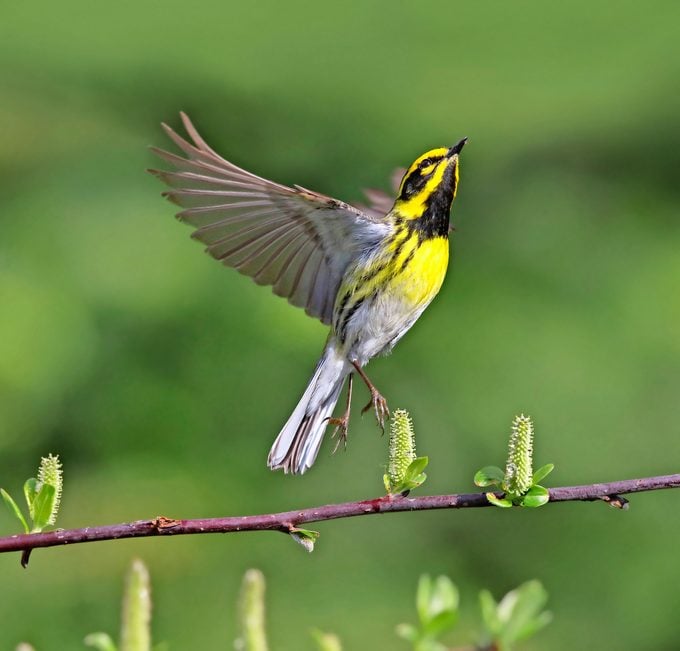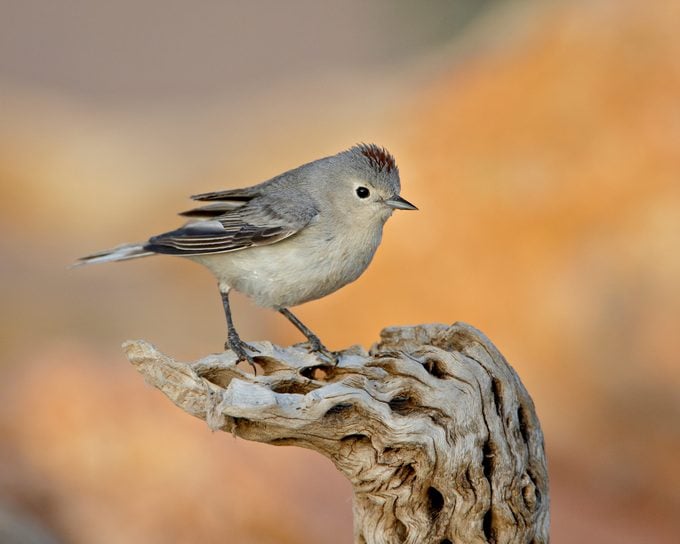20 Stunning Warblers to Look for in Spring
Updated: Mar. 22, 2022
Warblers are colorful and awe-inspiring birds. Of all the types of warbler birds in North America, these deserve special attention.
Warblers are some of the most exciting birds to see during spring migration. These colorful spring birds leave their warm wintering grounds south of the border in Central and South America and migrate up to the norther parts of the country. Although warblers are tiny, their brightly colored feathers make them stand out as they flit from branch to branch, hunting insects.
There are over 50 species of warblers in the United States and Canada, but most warblers don’t visit backyards, because they aren’t feeder birds and typically stick to forested areas. We rounded up 20 types of warblers you might see this spring. But there are many more warbler species to photograph and identify, so make sure you keep your camera, binoculars and field guides handy!
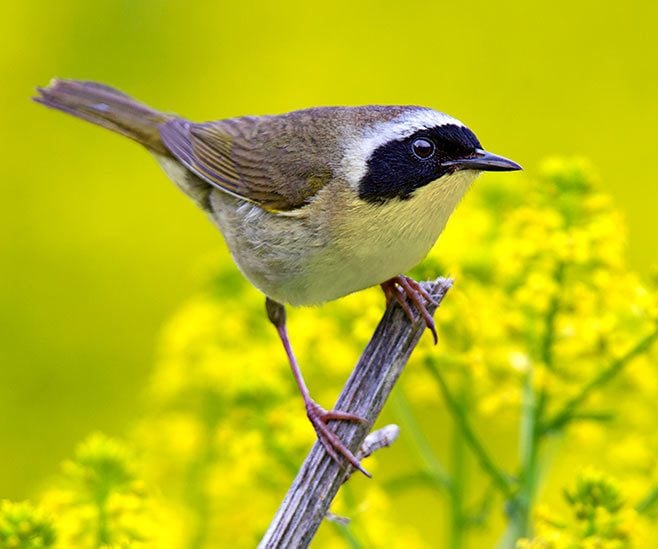
1. Common Yellowthroat
It’s worth a visit to a marshy area for a quick look at common yellowthroats. Although they try to remain out of sight, they flit in and out of reeds and cattails. Listen for the wichity-wichity-wichity song from mashes, and look for the male’s distinct black mask.
Check out 25 small yellow birds you should know.
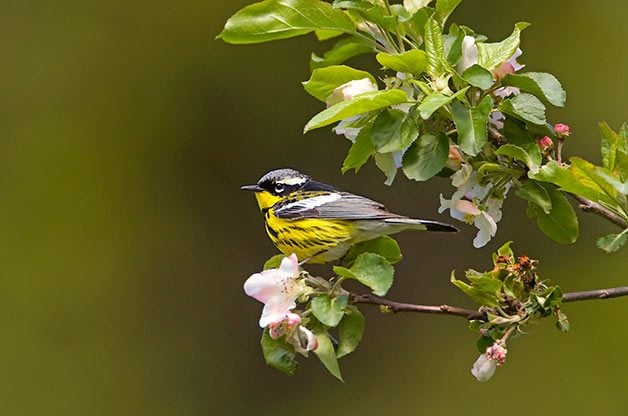
2. Magnolia Warbler
This easy-to-spot warbler spends time in low shrubs and small trees. During spring migration, magnolia warblers zip through the eastern half of the U.S. on the way to their breeding grounds in Canada and in northern states like Minnesota and Wisconsin.
Meet the colorful Canada warbler.
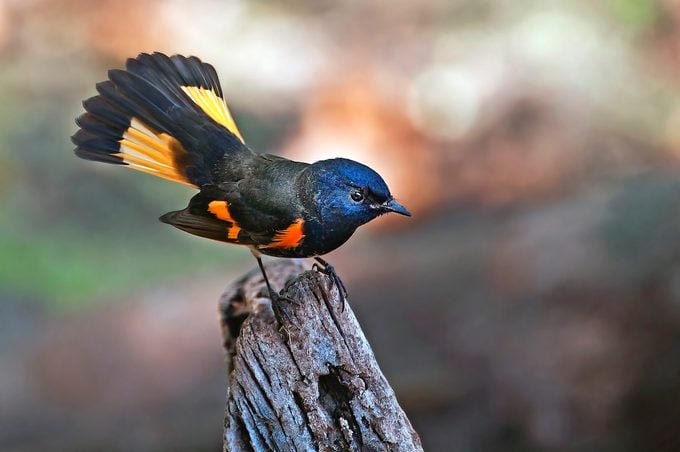
3. American Redstart
Bright yellow plumage is common among warblers. But the male American redstart, covered in mostly black, breaks all the rules. Their bold patterns and behaviors are impossible to miss. Redstarts are among the most active warblers, showing off orange-red patches as they flit through trees. Be on the lookout for redstarts if you’re birding on eastern forest edges.
American redstarts stand out, not just for their brilliantly bright feathers but also for the way their feathers are used. Redstarts fan out their tails in a display thought to startle insect prey into the open. These birds can show up nearly anywhere in migration, with the exception of the far West, and they nest in parks and woodlots throughout most of North America.
Meet the northern parula — a member of the redstart’s family.
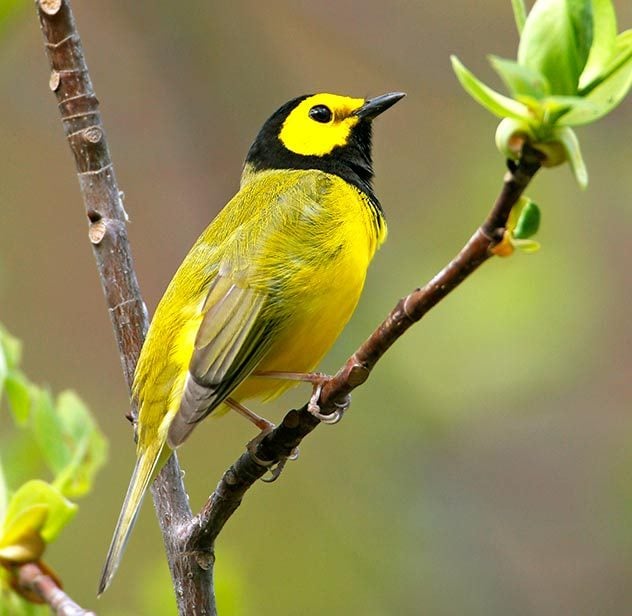
4. Hooded Warbler
Unlike other treetop loving warblers, the hooded warbler forages, and even nests, close to the ground. On the males, a black hood around a yellow face helps with ID. Look for these birds in their ideal habitat—shady undergrowth in the southeast and northeast during summer breeding season.
Marvel at jaw-dropping photos of the brightly colored Blackburnian warbler.
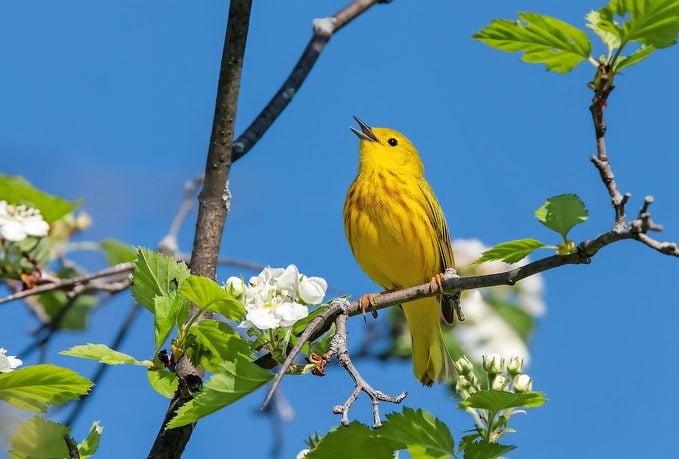
5. Yellow Warbler
It’s hard to miss the brilliantly colored yellow warbler. Step outside in summer and you might hear this whistled tune: Sweet, sweet, sweet, I’m so sweet. Yellows, our most widespread warbler, sing while nesting across much of the United States and Canada, especially in shrubland and woodland thickets. Females are pale lemon in color, while the males sport bold orange streaks along their chests. One of the most common of the 50 warbler species, you won’t have to go deep into the forest to see one. Yellows can be found near open woods, streams, orchards and even roadsides.
Learn how to tell the difference between a yellow warbler vs goldfinch.
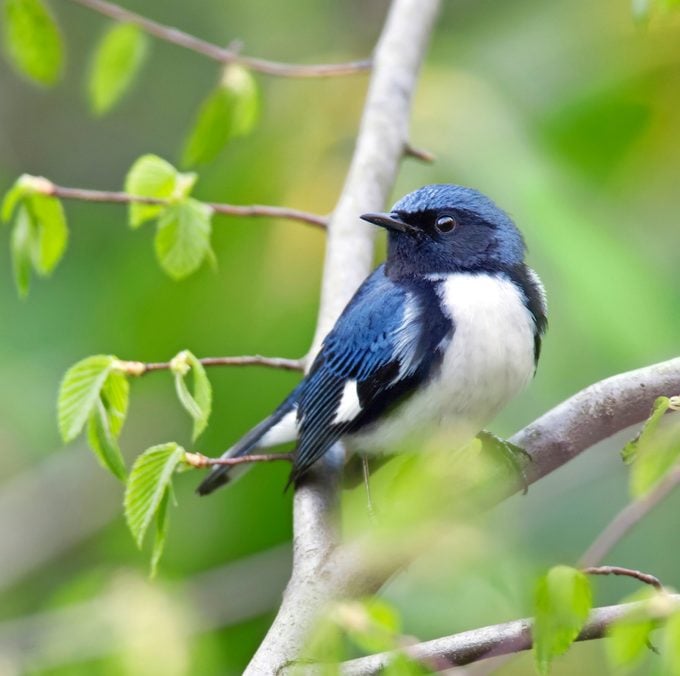
6. Black-Throated Blue Warbler
Warblers often sport yellow feathers, but the plumage of black-throated blue warblers would make a stunning prom ensemble. The formal black and white is accented with rich blues in males, white females show a blush of faint indigo. White patches in the wings remind many birders of pocket squares. Black-throated blue warblers thrive in the dense forest understory from the southern Appalachians to the Canadian Maritime Provinces and Quebec.
Don’t miss 20 photos of blue colored birds.
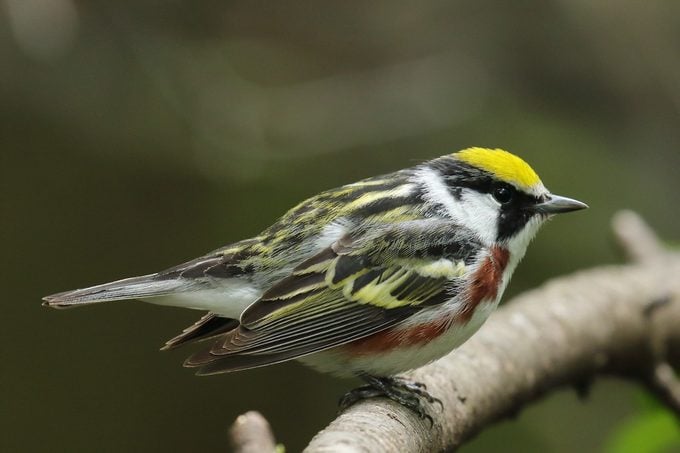
7. Chestnut-Sided Warbler
No other warbler bird sports this unique color combination. An olive-yellow cap and rufous sides make the chestnut-sided warbler a showstopper. It passes through the eastern U.S. during migration, so be on the lookout for this beauty on forest edges.
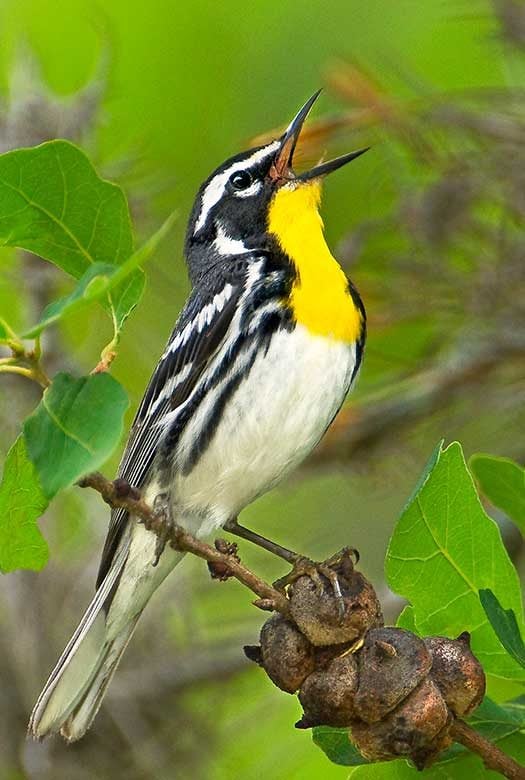
8. Yellow-Throated Warbler
The vibrant yellow throat is an important field mark. These warblers are early migrants and spend their summers in the southeastern U.S. They forage high in the canopy of swamp and pine forests.
Learn how to identify palm warblers.
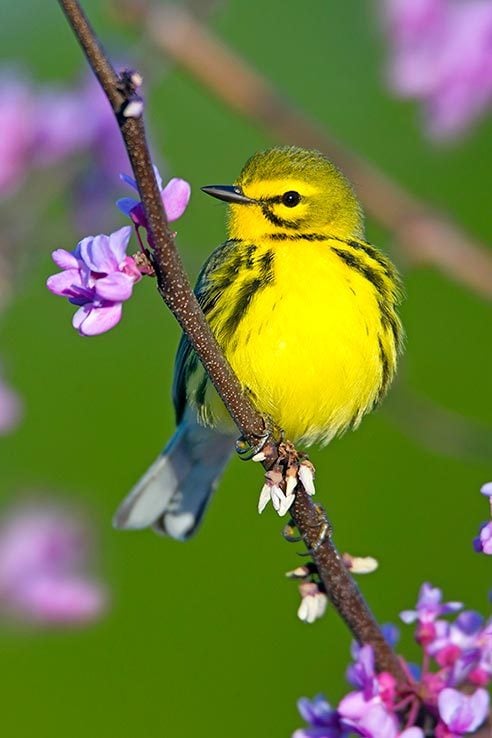
9. Prairie Warbler
Don’t let the name fool you! These streaky-faced birds prefer dense thickets throughout the eastern U.S. Males have signature chestnut-colored marks on their backs. Females have similar, though subtler, markings.
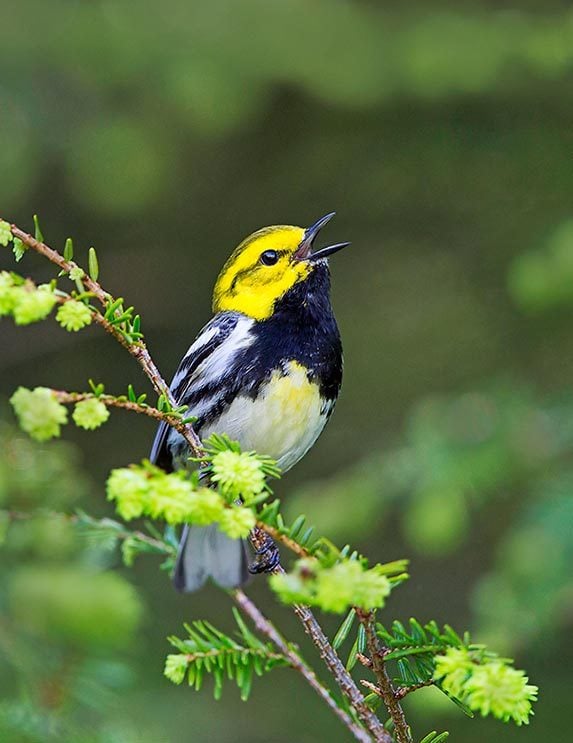
10. Black-Throated Green Warbler
Listen for the male’s recognizable song, zoo, zee, zoo zoo zee, and then look up—way up! These types of warblers stay high in coniferous or mixed forests throughout summer in the northeast. They are “green” because both males and females have olive backs.
Check out the top warbler hotspots to visit in spring.
11. Yellow-Rumped Warbler
Most warbler bird species rely heavily on bugs. But yellow-rumped warblers are sometimes enticed to suet feeders. Some of the last to head south in fall, these warblers shift to eating berries in the southern states. They return north very early in spring migration as well. Try adding water features like bird baths to the landscape to help lure these birds to your yard.
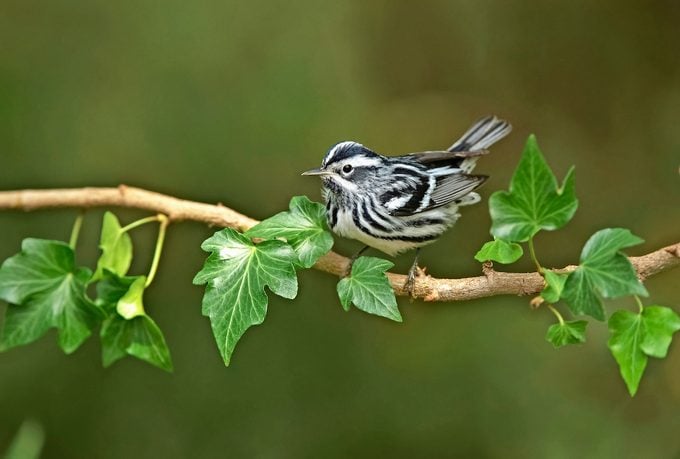
12. Black-and-White Warbler
The contrast of black-and-white warblers gives them a look of sophistication. Their methodical feeding style adds a touch of class. Black-and-white warblers mimic nuthatches by creeping along tree trunks and branches in search of invertebrate snacks. They’re widespread east of the Rockies, and a few show up in the West each year.
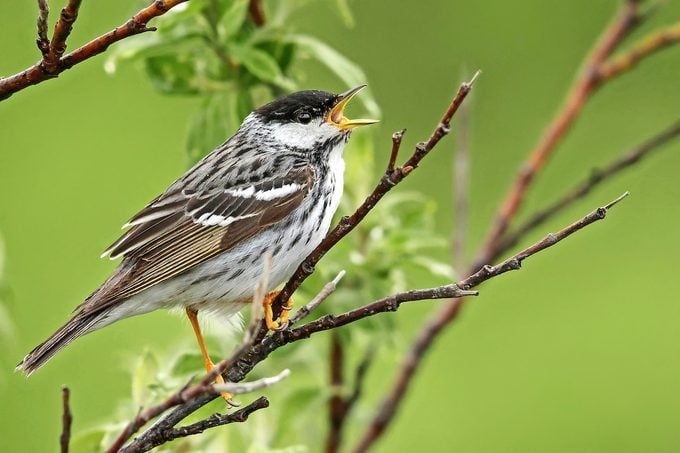
13. Blackpoll Warbler
Most types of warblers are long-distance migrants, but blackpolls take this to the extreme. Some of these songbirds summer in Alaska and winter in Brazil. Each weighs as much as a pen, yet in fall they complete epic journeys, flying nonstop from the eastern seaboard to northern South America. Blackpolls gorge on insects to build fat reserves to fuel their three-day trip.
Learn how to identify a Tennessee warbler and a Nashville warbler.
14. Ovenbird
Admittedly, ovenbirds don’t quite look the part. Their olive-brown backs are offset by streaks on their bellies. A splash of deep orange running along the tops of their heads gives each a racing stripe of color. Behaviorally, ovenbirds aren’t your typical warbler species, either. They spend their time foraging along the forest floor. They even build dome-shaped nests, for which they are named, directly on the ground.
Learn all about the Wilson’s warbler.
15. Kirtland’s Warbler
Only a few thousand Kirtland’s warblers are found in the world. The majority nests in jack pine forests in central Michigan, with populations expanding into Wisconsin and Ontario. Each year during migration, a few are spotted between their breeding ranges and their wintering habitats in the Bahamas.
Birding tips: Find out how to identify mystery birds.
16. Townsend’s Warbler
The West has less warbler bird diversity, but a number of species can be tracked down in the region. West of the Rocky Mountains, the stunning Townsend’s warbler is fairly common during migration. It breeds in the wet evergreen forests from Idaho to Alaska, and winters along the West Coast, inland in Arizona and Texas, and south into Mexico and Central America. Similar in appearance and closely related, hermit warblers mate and hybridize with Townsend’s where their ranges overlap.
Next, meet the cerulean warbler.
17. Lucy’s Warblers
Lucy’s warblers live in the very driest climates. Found in the desert southwest, they are one of the only warblers to nest in tree cavities. (Prothonotary warblers, also cavity nesters, live in an opposite habitat: swamps and wet forests of the East.) Lucy’s seek abandoned woodpecker holes, natural tree cavities or specially designed triangle-style nest boxes.
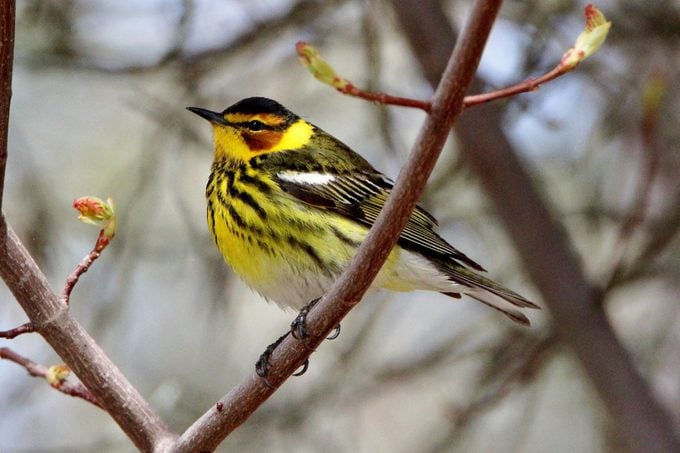
18. Cape May Warblers
The Cape May warbler is recognized by the thin black streaks running down its yellow chest and sides. Cape May warblers spend the summer in spruce forests of eastern Canada and the winter mostly on islands in the Caribbean. They pass through Pennsylvania and nearby regions (including Cape May, New Jersey, for which they were named) during spring and fall migrations.
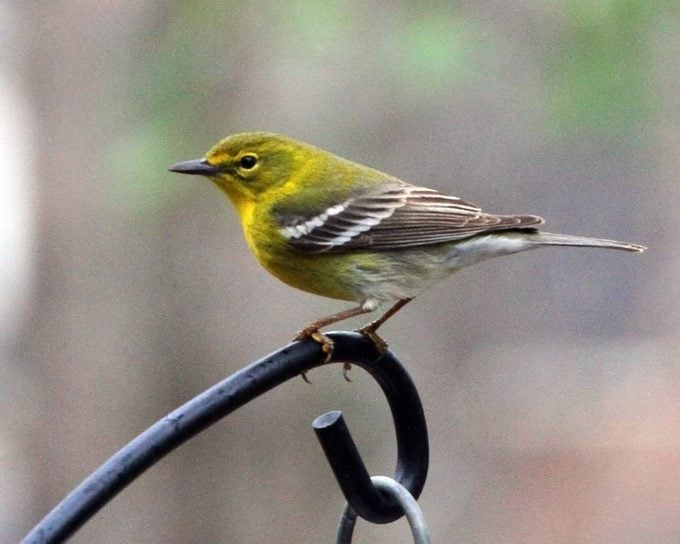
19. Pine Warblers
Field marks for the pine warbler include the overall yellow color, the pattern of its face and the two whitish wing bars on dark gray wings. Also note the bird’s small size and thin bill. Pine warblers are found in Florida and elsewhere in the southeastern states all year, and in summer their range extends as far north as the southern edge of eastern Canada.
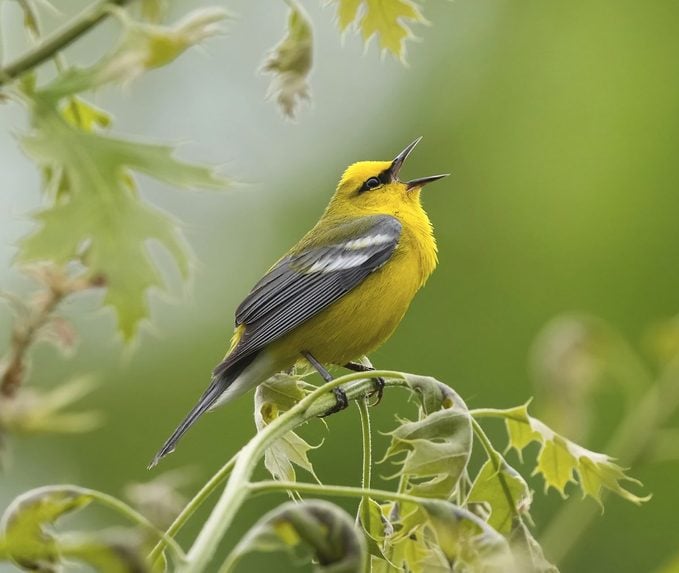
20. Blue-Winged Warblers
The blue-winged warbler gets its name from the bluish-gray color of its wings. Males sing to defend a territory and attract a mate. They croon from the tops of tall shrubs or at the edges of fields when calling to females. Listen for a raspy, unmistakable buzzing.
Next, don’t miss the 51 best spring bird pictures ever!

